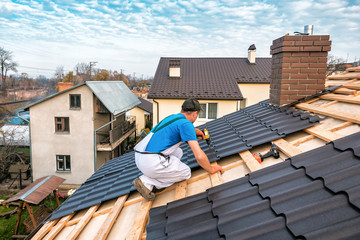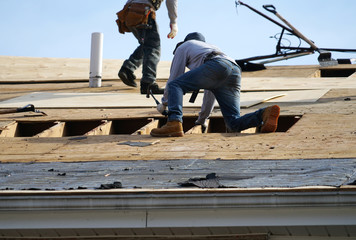Plumbing involves the pipes, fixtures, and fittings that bring water and gas into buildings and remove wastewater. Building infrastructure that supports safe and comfortable living and working environments is vital. For more information, Click Here to proceed.
With efficient plumbing systems, modern buildings can function properly. They could not provide their occupants with clean water or effective waste management services.

A plumbing system is a network of pipes that conveys water to and from fixtures in your home. Its main functions are to provide safe, clean drinking water and remove wastewater from your home as needed. Although a home’s plumbing may seem complex, it is based on simple principles. Understanding the basics can help you maintain your plumbing and resolve problems more easily.
A household’s plumbing usually starts with the main water supply line from the street to the house. This large pipe connects to a water meter, which tracks your home’s water usage. The meter also has a valve where you can shut off the water supply to your home in case of emergency or when doing maintenance work. The pipework within your house consists of supply pipes (usually made from plastic, copper, or galvanized iron), service pipes, and drains.
Your home’s plumbing also includes a water heater, which stores hot water for use in your home. The hot water comes from the water heater through a pipe that runs to your toilets, showers, and faucets. This pipe is often under pressure because it has to overcome the force of gravity to reach upstairs taps and to go around corners.
The plumbing system also consists of wastewater drains that carry sewage and other waste products away from your home. These drains connect to the sewer system or septic tank in your property. The drainage system also comprises traps, which are curved sections of pipes located under sinks, bathtubs, and toilets that collect and retain a small amount of water to prevent sewer gases and odors from entering your home.
A plumbing system is important to your home because it allows you to take a bath or shower, wash your clothes and dishes, and clean yourself and your household members. Proper plumbing also ensures the appropriate disposal of wastewater and sewage to keep your home healthy and hygienic. With adequate plumbing, you can avoid many problems, including health issues, odors, and damage to your property.
The drain system does two important jobs: it brings water into your house from the outside and removes wastewater and sewage. Without it, your home would be a mess and a health risk.
Clean, fresh water comes in through the main plumbing pipes and is distributed to fixtures like sinks, toilets, and bathtubs. The fixture drain lines then collect the waste and used water, sending it through a sewer system or septic tank to be disposed of in an environmentally safe manner. The drain system also includes vent pipes that allow air to flow through the pipes so that water does not become stagnant.
Most people don’t give the drain system much thought until it stops working correctly. However, understanding how it works can help you avoid some common problems.
For instance, if you notice the unpleasant smell of rotten eggs coming from your kitchen drains, it is probably because the water in the sink trap has evaporated. This is a sign of an issue with the sewer system, and you should call your plumber immediately.
A plumber can install a new trap or fix the existing one to prevent the foul odor from returning to the kitchen. Another thing that plumbers often do is clean out the septic tank or sewer system. This ensures the pipe network is free of debris that could cause blockages.
While many of us don’t think about the drainage system until something goes wrong, it’s pretty complex. You need to understand how the different parts work together before you can diagnose and fix any problems that may arise.
The most basic component of a household drainage system is the main drain line, which is plumbed underneath your house and connected to the sewer system or septic tank. The drain line is sloped to allow gravity to send the waste down and capped to keep animals and rainwater out. It is also fitted with a drain trap, which is a curved section of pipe (often called a “P” or “U”) that holds water and prevents sewage gasses from rising into the house.
The plumbing system also includes heating and cooling systems to keep the indoor temperatures comfortable. This allows you to perform other tasks such as cooking, bathing, and laundry without worrying about chilly winter or hot summer weather. The heating and cooling systems in your plumbing are regulated by standards set by the WaterMark Certification Scheme. These ensure that the manufacturers produce quality goods and can be trusted. You can identify the approved products by the WaterMark logo on them.
Plumbing is a complex network of pipes, fixtures, and appliances that conveys water to and from different locations within homes and buildings. This system is crucial for ensuring a clean and safe water supply and a healthy waste management process. Plumbers specialize in the installation, maintenance, and repair of plumbing systems. They are also responsible for ensuring these systems comply with strict regulatory standards and building codes.
As a result, plumbing is a highly regulated industry. For example, certified plumbers must adhere to provincial and territorial water use, sanitation, and waste disposal regulations. In addition, they must also stay up-to-date on new technologies and techniques to remain competitive in the job market.
Many people only think about their plumbing once something goes wrong. But just like changing the oil in your car or scheduling a haircut, it’s important to schedule regular maintenance for your home’s plumbing. This will help prevent major issues and save you money in the long run. It will also ensure that your water is clean and safe to drink. So don’t wait until something breaks – schedule a plumbing inspection today! You’ll be glad you did. And don’t forget to change the filter in your water heater! This will help reduce sediment buildup, leading to low water pressure. And be sure to avoid putting grease down the drain, as this can cause clogs.
Many plumbing problems can be easily fixed by a homeowner with some basic tools and a little know-how. However, some issues are best left to a professional. These include a leaky faucet, a draining sink or tub, a clogged toilet, water stains on ceilings or walls, and foul odors from drains or sewer systems. Regular maintenance and timely repairs can reduce the need for costly replacements or major disruptions to your home’s plumbing system.
Your pipes are essential to your home, carrying fresh water in and out and connecting all the appliances and fixtures. Leaks in your pipes can cause serious damage to your property and lower your home’s overall value. If you suspect a leak, you should contact a plumber right away. A professional plumber will use various tools and techniques to find the source of the leak and repair it.
Most common plumbing leaks are caused by corrosion, age, or general wear and tear. Depending on the leak’s location, a plumber may need to dig up and replace part or all of your pipes. Some leaks are also caused by uncontrolled water pressure or a loose fitting.
Repairing your pipes immediately can minimize damage and reduce your water bill. Homeowners can often fix small leaks with a slip coupling available at most hardware stores. However, this is only a temporary solution and should not be used in place of professional plumbing repairs.
Plumbing repairs are necessary for a safe and comfortable living environment. While it is important to understand how plumbing systems work and some basic troubleshooting techniques, you should always leave the more complex jobs to a professional. This will ensure your family’s safety and prevent costly repairs in the future.








